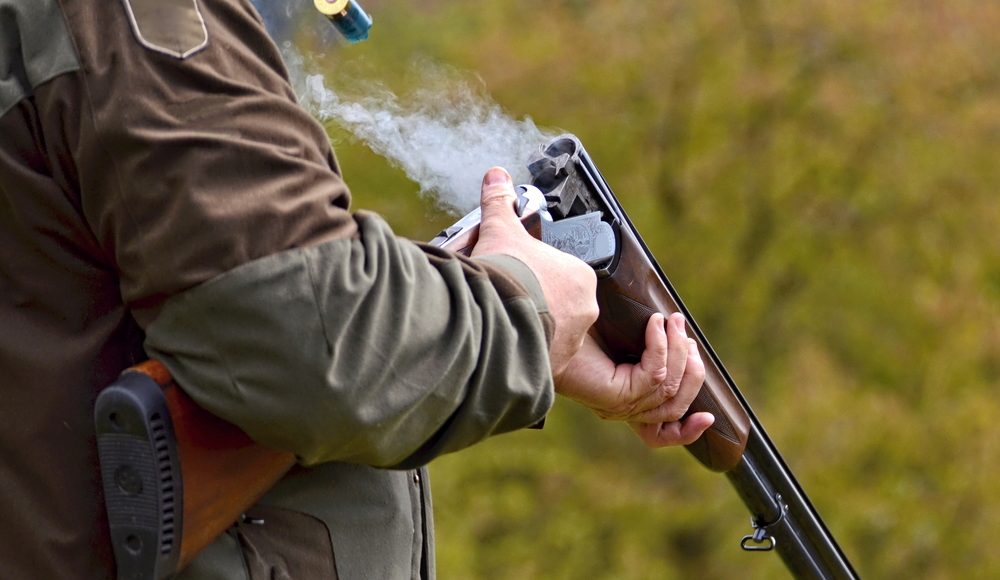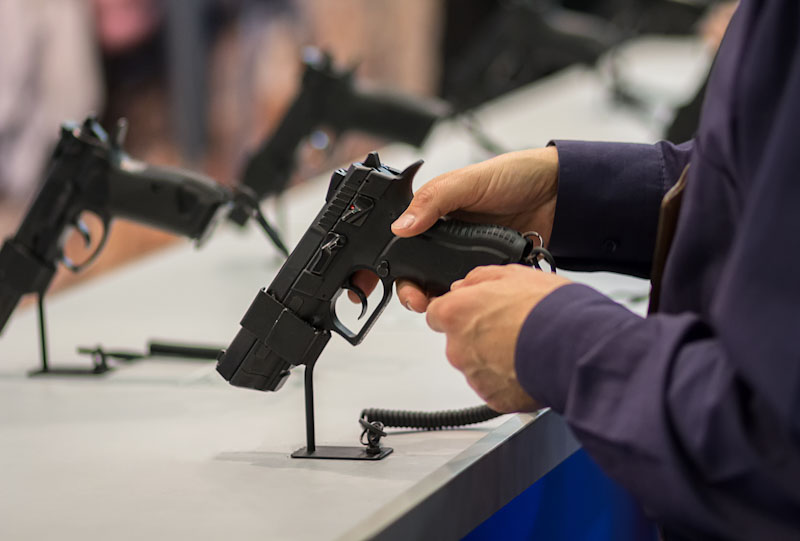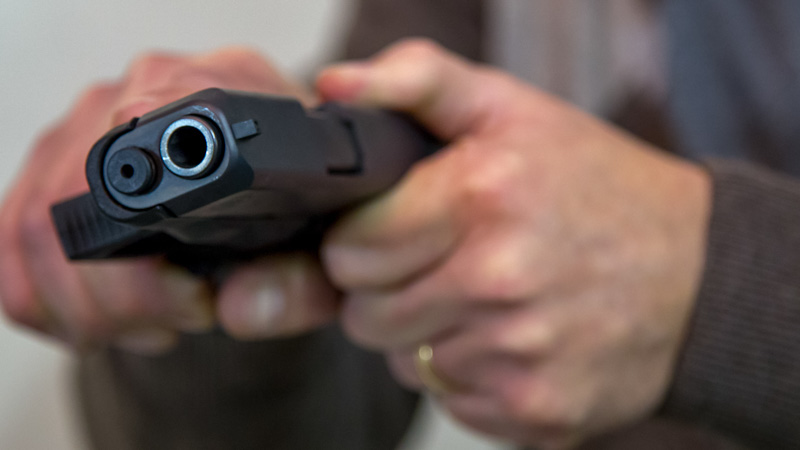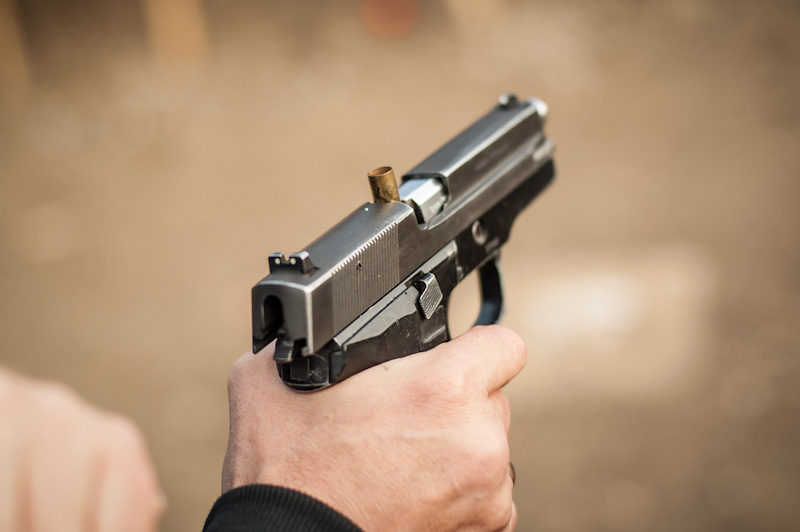Short-barreled rifles and short-barreled shotguns have grown in popularity over recent years.
For those interesting in purchasing one these, but still on the fence about which one to go with, lets go over what they have going for them.
Technical Differences
Before we get to the more subjective reasons as to why you might pick one over the other, we should try to understand what they each are.
A short-barreled rifle, or SBR, is a rifle in every sense of the word. What distinguishes it from “normal” rifles is the barrel length. According to the ATF, a rifle becomes an SBR when the barrel is 16 inches or shorter. These can be everything from semi-automatic rifles, like AR-15s, to bolt-action rifles.
Sometimes the differences between a short-barreled rifle and AR pistols can be confusing. Essentially, an AR pistol, or any similar pistol, does not have a stock. This is supposed to signify that it is not meant to be fired from the shoulder, making it a pistol. The barrel length and firing mechanism may be similar between an AR pistol and a short-barreled AR rifle, but the SBR is meant to be fired from the shoulder with a rifle stock and the AR pistol is not.
A short-barreled shotgun, or SBS, is similar to an SBR in the sense that it is a full fledged shotgun in every sense of the word; the barrel length is just shorter. For a shotgun to be regulated under the NFA In this way, the barrel has to be less than 18 inches. It still has to have a stock and be meant to be fired from the shoulder.
Pros of a Short-Barreled Shotgun
When it comes to self-defense, there are a lot of reasons to pick an SBS. For one, shotgun shells are often considered “safer” for home defense. Obviously, shooting a potential shooter with a shotgun is not safe for them. The safety aspect comes from the lowered risk of injuring others nearby. Shotgun shells tend to disperse most of their energy on impact. A round fired from a rifle is more likely to penetrate through walls and other surfaces. This means that you may run the risk of hitting people in other rooms or nearby houses. An SBS will pose way less of a risk of this happening.
Another thing some like about short-barreled shotguns is the spread of the shots. Due to the shorter barrel, you tend to get a wider spread. Even better is the fact that you can use a variety of chokes to tighten it up if you want. This essentially offers a bit of versatility. This ties into the general versatility of shotguns that comes from the variety of loads you can use. Bird shot and buck shot offer a variety in pellet load. You can load slugs for more precise medium range shooting. Of course, most will not be buying an SBS for medium or long-range shooting, but the point is that shotguns offer versatility.
Pros of a Short-Barreled Rifle
According to some, the short-barreled rifle has almost made SMGs obsolete. You get the maneuverability of an SMG. You get similar magazine capacities. You can use all assortments of attachments on them. You get a comparable rate of fire. In addition to those qualities shared with SMGs, you have firearms that fire rifle rounds and have a longer effective range. Also, you can use the versatile AR platform to build your idea of an ideal firearm. Another advantage to SBRs comes to those who like suppressors. Placing a suppressor on a full-length rifle can make it that much harder to move around with. An SBR with a suppressor will usually still be shorter than most rifles.
One thing short-barreled rifles have over short-barreled shotguns is increased range. Obviously no one buys a short-barreled firearm if range is their main priority. However, you sacrifice less range with an SBR. Many even prefer them for hunting. Hunters who enjoy trekking through the wilderness to find prey and hunting spots will know how cumbersome firearms and gear can be over long stretches. An SBR will be easier to store in a pack while hiking. It will also be less likely to get hung up on branches and things while carrying it. It won’t be ideal from the longest ranges, but for hunting at short to medium ranges they perform quite well.
While there are clear reasons why some would prefer an SBS for self-defense, SBRs have their proponents as well. An obvious reason is the magazine size. A shotgun will typically hold less than 10 shells fully loaded. This is not always the case, as some shotguns do use detachable magazines that hold more shells, but it usually holds true. With a short-barreled rifle, the typical magazine will hold 30 rounds. Larger magazines can always be purchased as well. Some prefer this because the stress of a home invasion can make accuracy a bit more complicated than when plinking on the range. You also never know how many intruders there may be nor how many times you may need to fire. Having more rounds adds a layer of confidence in dealing with threats.
Pros of Both
The most clear advantage of both short-barreled shotguns and short-barreled rifles is increased maneuverability. Anytime you are handling a firearm in closed spaces, length matters. When maneuvering through doors, archways, and other obstacles, longer firearms can be clunky. Someone who knows their way around a firearm isn’t necessarily going to be bumping into things, but they will have to take extra care with their movements. A firearm with a short barrel is going to greatly increase the ease of which one can move through space. They will also make moving and shooting quicker due to their increased efficiency.
Many might suggest that one could simply use a pistol if they want to have the most maneuverability in confined spaces. However, you have to give up the firepower that typically comes with long guns. With SBRs specifically, you can also have larger magazines than you do with a pistol. An SBS or an SBR offers the full package. You get the firepower you need whether it comes in the way of shotgun shells or rifle rounds. You get more variety in the types of weapons you can carry. You also get the increased mobility of a shorter firearm.
It also cannot be denied that the fun of shooting them is worth considering. The shorter barrel lengths change the balance of the firearms in your hands. When moving them around, changing aim, or tracking targets, some find them more controllable. Adding a new type of firearm to your collection is never a bad thing.
How to Obtain One?
This section could have been labeled “The Cons of Both”, but that would be unfair to the firearms considering it isn’t their fault.
Whether you decide to buy an SBR or an SBS, the process of obtaining one will be a little different than the process of buying most other guns. Under the National Firearms Act (NFA), short-barreled rifles and short-barreled shotguns fall under title II firearms and are subject to special regulation.
One of the main things is that you have to purchase a $200 tax stamp. You also have to register the firearm, and, unlike with most firearms, the wait time to obtain one can be quite long. With most firearms, you may have to wait a simple 3 day wait period and allow the seller to conduct a background check with the FBI. When buying an SBR or an SBS, the ATF has special forms that have to be filed. If you are building the firearm yourself, you would file ATF Form 1. If you were buying it from a dealer, you would file ATF Form 4. You’ll need to check your local laws and regulations to ensure that you’re following the rules perfectly. Once you file these forms, they take time to be reviewed and approved. It can take anywhere from a month to a year.
Also, keep in mind that if you convert a rifle or shotgun to an SBR or an SBS, you still have to go through the process to “approve” the changes you make. Many firearms owners have made the simple conversion of attaching a short barrel to their AR, only to realize that they broke the law at a later date.
The legal process of obtaining an SBS or an SBR can be annoying, but it is doable. It is definitely worth pushing through if you want one.
So, which one should you buy?
You will find people who swear buy one or the other, and many swear by both. They each have their advantages, and it would be impossible to lay out an objective case for why one is absolutely better than the other. The best way to pick one is to simply think about what you need, think about what you now know about each, and choose the one that suits you best.













Ian | November 13, 2020
|
Don’t short barrel rifles fall under pistol length carbines in most states?
Chris | November 14, 2020
|
The article states: “According to the ATF, a rifle becomes an SBR when the barrel is 16 inches or shorter.”
One correction: The NFA designates a SBR as a “A rifle having a barrel or barrels of less than 16 inches in length;”
So an AR with a 16 inch barrel is not an SBR.
vocalpatriot | January 18, 2021
|
How does a barrel being short, equate to greater efficiency? sbr is SHORTER than 16″ not including 16″barrels and the silly comment:
“it’s definitely worth pushing through if you want one.” really? it is? smh.
Raven Prepper | October 14, 2021
|
simple soultion is to build a PISTOL AR 15 and just get the benefits of a SBR without a stupid tax stamp